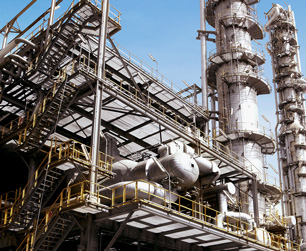Trichlorobenzenes (TCBs)
| EPA Maximum Contaminant Level (MCL) |
1,2,4-TCB | 0.07 mg/L |

Trichlorobenzenes are a group of three similarly-structured organic chemicals. 1,2,4-TCB is the most widely used, as a dye carrier, solvent, coolant, lubricant and heat-transfer medium, and in the manufacture of herbicides and wood preservatives.
TCBs arrive in water primarily through discharge from textile finishing factories.
Health Effects of TCBs
According to the World Health Organization, TCBs are moderately toxic, causing skin, eye and respiratory irritation and having toxic effects on the liver. The EPA warns of glandular damage with long term exposure:
Some people who drink water containing 1,2,4-trichlorobenzene well in excess of the maximum contaminant level [0.07 milligrams per Liter] for many years could experience changes in their adrenal glands.
Water Treatment for TCBs
The EPA recommends granular activated carbon (GAC) in combination with packed tower aeration (an air stripping technique) for the treatment of 1,2,4-trichlorobenzene.
Source: EPA, WHO, Photo: WikiMedia, author: Secl
Site Index
Filtration Systems
- Aeration for Iron & Sulfide
- Backwashing Filters
(whole house & well units)
- Chlorine & Chemical Injectors
- Countertop Water Filters
- Emergency Filters
- Garden Hose Filters
- Reverse Osmosis, Residential
- Reverse Osmosis, Commercial
- Shower Filters
- Specialty Filters
- Ultraviolet Systems
- Undersink Filters
- Water Softeners
- Whole House Filters
Cartridges
Parts
- Replacement Parts
- Faucets
- Filter Media
- Fittings
- Housings
- O-rings
- Pumps
- Pura UV
- R.O. Parts
- R.O. Tanks
- R.O. Booster Pump
- VIQUA UV